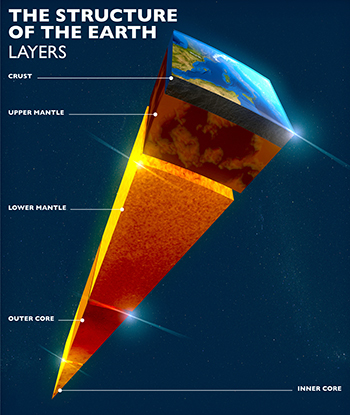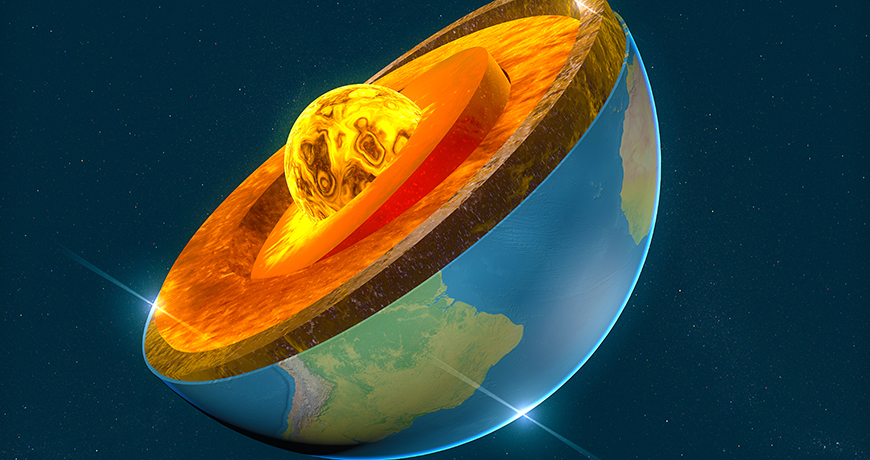
The Earth’s mantle is made of silicate material that is normally a very poor electrical conductor. Therefore, even if the lowermost mantle were liquid for billions of years, rapid fluid motions inside it wouldn’t produce large electrical currents needed for magnetic field generation, similar to how Earth’s dynamo currently works in the core. Stegman’s team asserted the liquid silicate might actually be more electrically conductive than what was generally believed.
“Ziegler and Stegman first proposed the idea of a silicate dynamo for the early Earth,” said UCLA geophysicist Lars Stixrude. The idea was met with skepticism because their early results “showed that a silicate dynamo was only possible if the electrical conductivity of silicate liquid was remarkably high, much higher than had been measured in silicate liquids at low pressure and temperature.”
A team led by Stixrude used quantum-mechanical computations to predict the conductivity of silicate liquid at basal magma ocean conditions for the first time.
According to Stixrude, “we found very large values of the electrical conductivity, large enough to sustain a silicate dynamo.“ The UCLA study appeared in the Feb. 25 issue of Nature Communications.
In another paper, Arizona State geophysicist Joseph O’Rourke applied Stegman’s concept to consider whether it’s possible that Venus might have at one point generated a magnetic field within a molten mantle.
These new studies are signs that the premise is starting to take hold, but is still far from being widely accepted.
“No one is going to believe it until they do it themselves and now two other highly esteemed scientists have done it themselves,” said Stegman.
"The pioneering studies of Dave Stegman and his collaborators directly inspired my work on Venus,” said O’Rourke. “Their recent paper helps answer a question that vexed scientists for many years: How has Earth's magnetic field survived for billions of years?”
If Stegman’s premise is correct, it would mean the mantle could have provided the young planet’s first magnetic shield against cosmic radiation. It could also underpin studies of how tectonics evolved on the planet later in history.
“If the magnetic field was generated in the molten lower mantle above the core, then Earth had protection from the very beginning and that might have made life on Earth possible sooner,” Stegman said.
“Ultimately, our papers are complementary because they demonstrate that basal magma oceans are important to the evolution of terrestrial planets,” said O’Rourke. “Earth's basal magma ocean has solidified but was key to the longevity of our magnetic field.”
The Scripps Oceanography study was funded by the National Science Foundation, the U.S. Department of Energy, and a UC San Diego SEED Fellowship.






修改评论